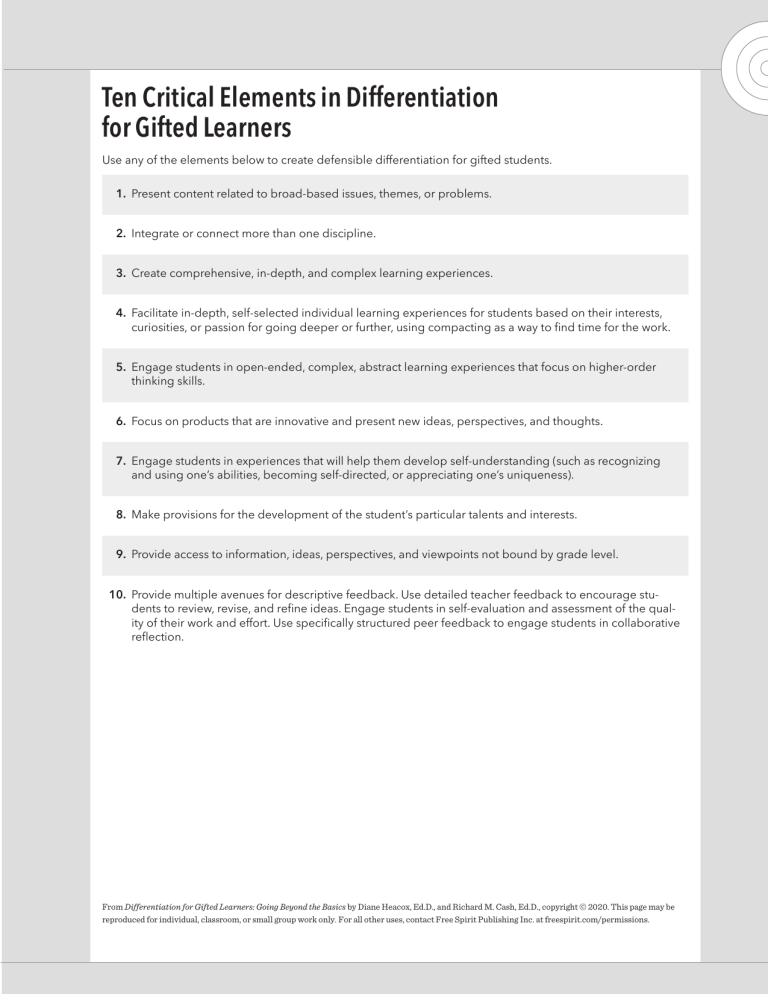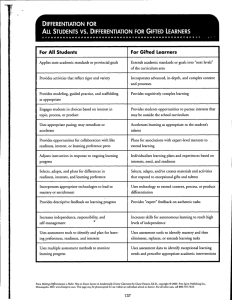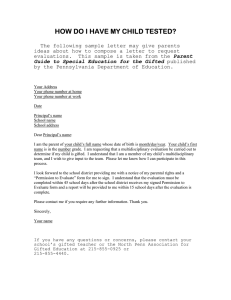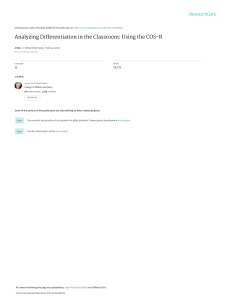
Ten Critical Elements in Differentiation for Gifted Learners Use any of the elements below to create defensible differentiation for gifted students. 1. Present content related to broad-based issues, themes, or problems. 2. Integrate or connect more than one discipline. 3. Create comprehensive, in-depth, and complex learning experiences. 4. F acilitate in-depth, self-selected individual learning experiences for students based on their interests, curiosities, or passion for going deeper or further, using compacting as a way to find time for the work. 5. E ngage students in open-ended, complex, abstract learning experiences that focus on higher-order thinking skills. 6. Focus on products that are innovative and present new ideas, perspectives, and thoughts. 7. E ngage students in experiences that will help them develop self-understanding (such as recognizing and using one’s abilities, becoming self-directed, or appreciating one’s uniqueness). 8. Make provisions for the development of the student’s particular talents and interests. 9. Provide access to information, ideas, perspectives, and viewpoints not bound by grade level. 10. P rovide multiple avenues for descriptive feedback. Use detailed teacher feedback to encourage students to review, revise, and refine ideas. Engage students in self-evaluation and assessment of the quality of their work and effort. Use specifically structured peer feedback to engage students in collaborative reflection. From Differentiation for Gifted Learners: Going Beyond the Basics by Diane Heacox, Ed.D., and Richard M. Cash, Ed.D., copyright © 2020. This page may be reproduced for individual, classroom, or small group work only. For all other uses, contact Free Spirit Publishing Inc. at freespirit.com/permissions.





